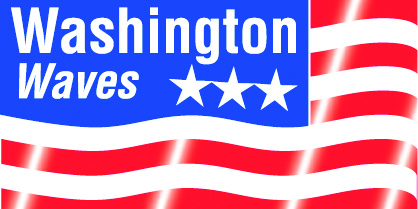Washington, D.C.—With only hours to spare, the Senate passed a stopgap measure to avoid a government shutdown and keep federal agencies up and running through December 3.
Approved by a vote of 65 to 35, the bill now goes to the House, where Speaker Nancy Pelosi (D-Calif.) said it will be passed and sent on to President Joe Biden to be signed into law.
In addition to keeping the government open, the measure also provides $28 billion to help states hit by hurricanes and wildfires and provide assistance to Afghan refugees.
A government shutdown has been only one of several significant challenges congressional leaders have been facing.
After the House blew past her self-imposed September 27 deadline for passing a trillion-dollar traditional infrastructure bill, Pelosi has been scrambling to not only save that bill but also a keep alive a nontraditional infrastructure package expected to total trillions of dollars.
She finally conceded Democratic leaders’ strategy of linking action on both vehicles no longer works and accepted a much later date for action on the so-called human infrastructure bill.
Biden, whose legislative agenda is tied to the success of both infrastructure deals, canceled a scheduled trip to Chicago, where he was to have promoted vaccinations.
“We’re obviously at a precarious, an important time in these discussions,” White House press secretary Jen Psaki said.
Even if Pelosi brings together House moderates and progressives in her own party, two moderate Democrats in the Senate, Joe Manchin of West Virginia and Kyrsten Sinema of Arizona, so far have refused to back the larger infrastructure package.
Without their votes in a 50-50 Senate, the so-called human infrastructure proposal is expected to fail.
Treasury Secretary Janet Yellen announced her agency is set to exhaust all extraordinary measures and cash on hand by October 18 without congressional action suspending the debt limit.
Democrats have argued action on the debt ceiling historically has been a bipartisan issue, but Republicans have objected, pointing to the Democrats’ plan to pass the massive human infrastructure without Republican votes.
Waterways Commerce Cutter
The Coast Guard announced the availability of a Draft Programmatic Environmental Impact Statement (PEIS) for the Waterways Commerce Cutter (WCC) Program’s acquisition and operation of a planned 30 WCCs.
Comments and related material must be postmarked or received by the Coast Guard by November 8. They may be submitted electronically at www.regulations.gov with the docket number USCG-2021-0191 or by U.S. mail at U.S. Coast Guard Headquarters, ATTN: LCDR S. Krolman (CG–9327), 2703 Martin Luther King Jr Ave. SE, Stop 7800, Washington, D.C. 20593.
For additional information, email HQS-SMB-CGWaterwaysCommerceCutter@uscg.mil.
Ferry Advantages
A House panel held a hearing to explore the role of ferry transportation in reducing congestion and contributing to clean mobility alternatives and the federal programs that support it.
“Maritime modes of transportation like ferries are among the cleanest transportation options,” said Rep. Eleanor Holmes Norton (D-D.C.), chairwoman of the House Transportation and Infrastructure Subcommittee on Highways and Transit.
“While passenger cars and light-duty trucks account for 58 percent of U.S. transportation greenhouse gas emissions, ships and boats account for just 2 percent.”
She said ferry service also can represent an investment in communities and a catalyst for revitalization.
Rep. Rodney Davis (R-Ill.), the panel’s ranking member, pointed out the Senate’s bipartisan infrastructure bill includes two new ferry boat programs and boosts ferry program funding from $550 million to $2.3 billion.
Maritime Security Committee
The National Maritime Security Advisory Committee is scheduled to meet October 28 via teleconference to discuss national maritime security, including cybersecurity risks that may cause a transportation security incident.
Open to the public, the meeting is set to begin at 1 p.m. EDT.
Comments and documents should be submitted by October 15 to ensure they are received by the committee before the meeting.
Contact Ryan Owens at 202-302-6565 by 1 p.m. October 15 to obtain information on joining the teleconference, which will have limited lines available on a first-come, first-served basis, and for additional information about speaking at the meeting.
Boating Safety
The National Boating Safety Advisory Committee and its subcommittees are scheduled to meet October 21 via teleconference.
Open to the public, the teleconference is set to begin at noon EDT.
Comments and documents should be submitted by October 14 to ensure they are received by the committee before the meeting.
Contact Jeff Decker at 202-372-1507 no later than 1 p.m. October 19 for information on joining the teleconference, which will have limited lines available on a first-come, first-served basis.
N.J. Port Access Route Study
The Coast Guard requested public comment on a draft report of a Port Access Route Study (PARS) for the Seacoast of New Jersey including offshore approaches to Delaware Bay, Del.
“We seek your comments on the content, proposed routing measures and development of the report,” the Coast Guard stated September 24 in the Federal Register.
“The recommendations of the study may lead to future rulemakings or appropriate international agreements.”
Comments and related material must reach the Coast Guard by October 25 and may be submitted with docket number USCG– 2020–0172 at www.regulations.gov.
For additional information, contact Jerry Barnes at 757-398-6230.




